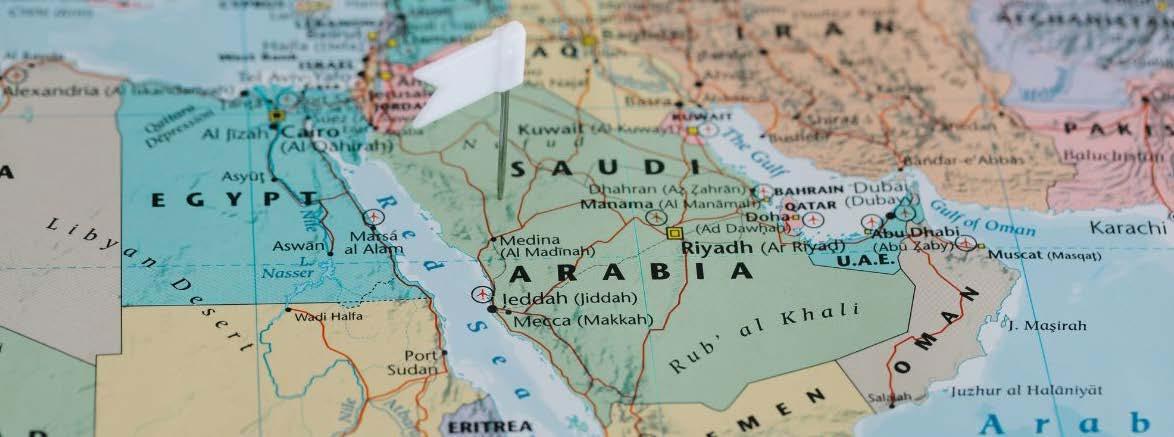
1 minute read
SAUDI ARABIA
RB: Saudi Arabia’s normalisation of relations with Iran reduces the risks of a direct military conflict over the coming year. Separately, the country will seek to better balance its international relations between East and West. Saudi Arabia will increasingly adhere to a more independent foreign policy approach than in the past, which implies close ties with China and Russia at the expense of antagonising traditional allies with the US and the EU.
Increased energy sector collaboration with China will be a top priority in 2023, which will include additional joint refining and petrochemical projects that seek to lock in long-term demand for Saudi crude oil and secure supplies. After a year marked by a massive oil windfall and major project announcements, the government continues to allocate much of the funds towards replenishing depleted foreign exchange reserves and also facilitates an increase in off-budget spending on Vision 2030 projects through the country’s sovereign wealth fund, the Public Investment Fund (PIF).
JM: In 2022, Saudi Arabia exported $325.7 billion worth of fuel, as well as significant amounts of industrial products like plastics, organic chemicals, and fertilisers, totalling $46.6 billion. The country also exported ships and boats worth $3.7 billion.
On the import side, Saudi Arabia brought in $21.1 billion of machinery and $19.1 billion of vehicles, with Japan as the top source of cars and trucks. In 2022, overall exports rose to $409.6 billion, with the UAE, China, India, Singapore, and Turkey being the top destinations, while imports increased to $187.6 billion, with China, the US, UAE, India, and Germany being the top sources.










